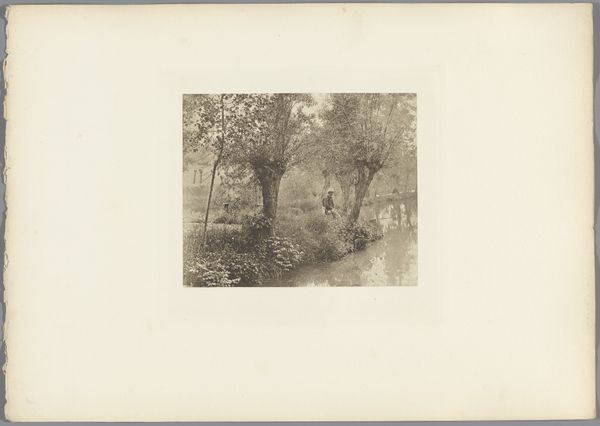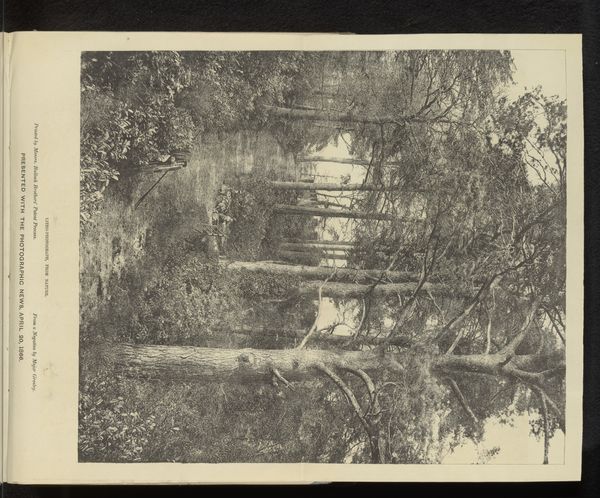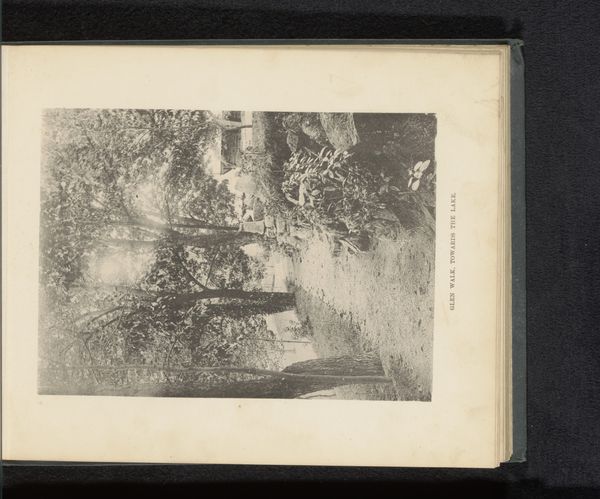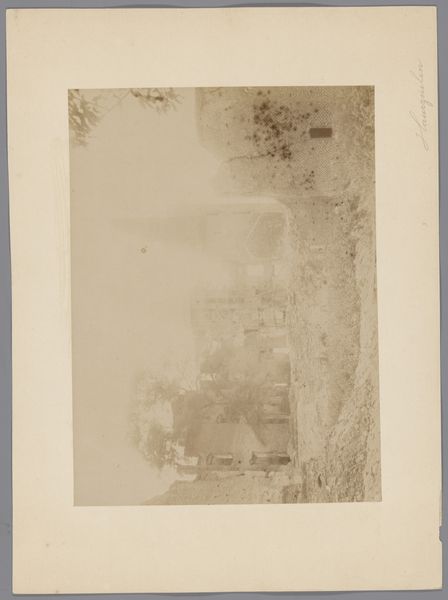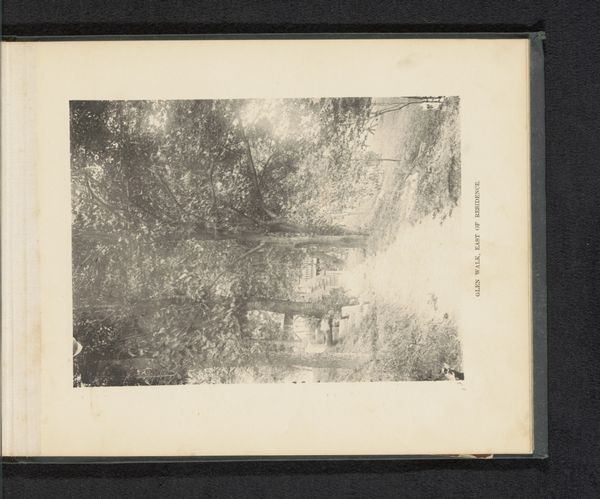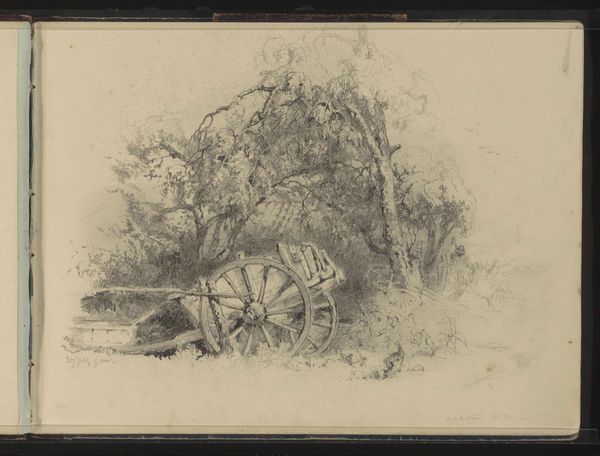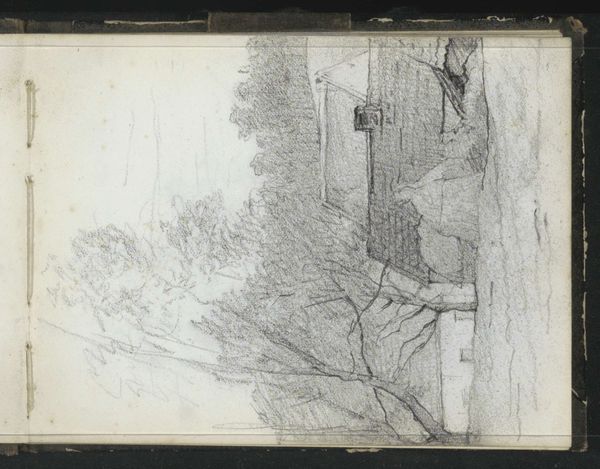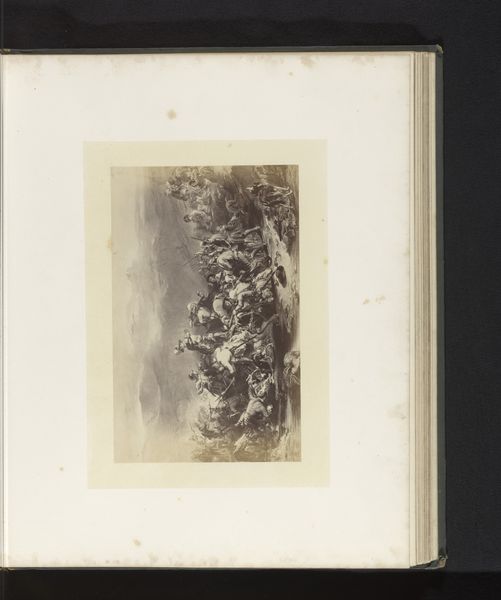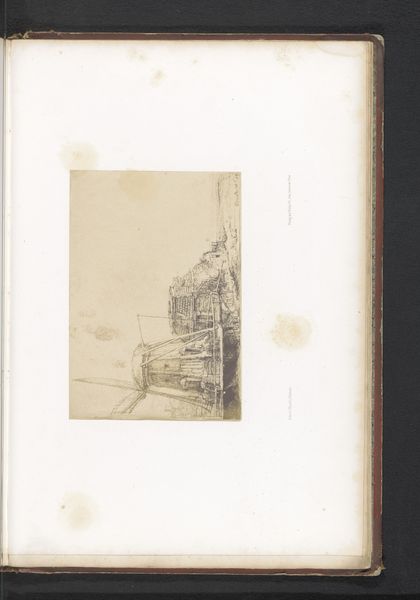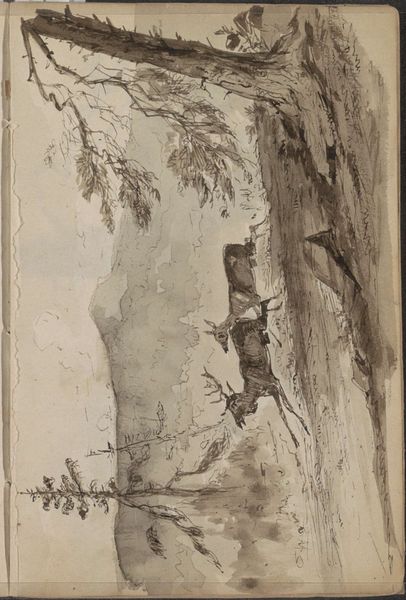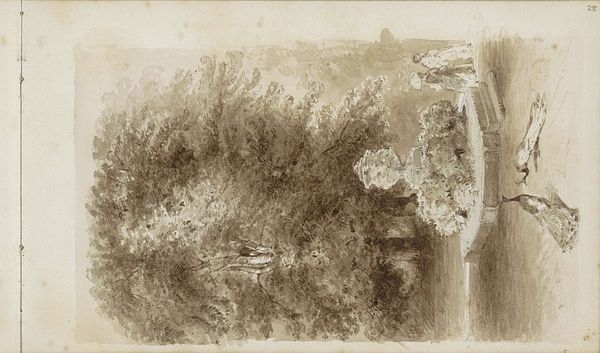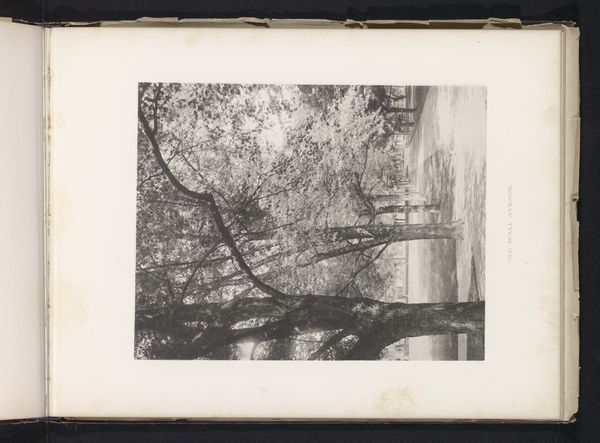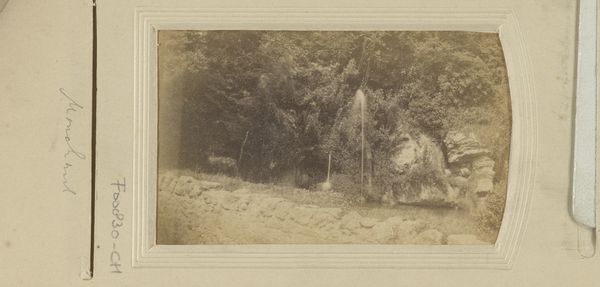
Twee mannen staand in een rivier op landgoed Hoog Oorsprong c. 1864 - 1865
0:00
0:00
mariavos
Rijksmuseum
Copyright: Rijks Museum: Open Domain
Curator: Immediately, a sense of serenity. It’s as if a quiet corner of the world has been captured with deliberate grace. The contrasting light and dark areas are especially striking. Editor: What you're perceiving is an artwork called "Twee mannen staand in een rivier op landgoed Hoog Oorsprong," made circa 1864-1865 by Maria Vos. Currently, it resides in the Rijksmuseum. The medium used for this drawing involves both pen and pencil. Curator: Indeed, one can readily discern the contrasts. The looseness of the line work contributes to this initial sense of peaceful spontaneity. There is no need to question the nature of how this drawing emerged as an object of perception. The contrast between detail and empty space, it directs our eyes and provides depth despite being predominantly monochromatic. Editor: Sketches such as this provide valuable insights into the practice and representation of nature during this period. As sketches of landscapes, particularly those made en plein air, became popular, how did artists use the freedom of the form to communicate an idealized image of everyday Dutch life? Curator: "Idealized" is interesting here, because I feel what is happening in this sketch lies closer to observation. Although these two men become representative in function, their placement is secondary to an intense visual analysis of light and shadow. Look at how closely the application of lines mimics how reflections refract over a surface of moving water, particularly in contrast to the stasis of the woods just beside. Editor: The historical context cannot be ignored when evaluating Vos' intention. Artists like her had a unique position in 19th century Dutch culture as interpreters of the national landscape. Their compositions weren’t only depictions of nature, but statements regarding how culture and land existed. Curator: This artwork offers a sophisticated manipulation of tone and line that goes far beyond its cultural significance. There is a dialogue created simply by how she put pen to paper and pencil to page. Editor: It makes one think about how individual experience shapes artistic interpretation in public versus personal works of art, and what is gained or lost across these very different contexts.
Comments
No comments
Be the first to comment and join the conversation on the ultimate creative platform.

